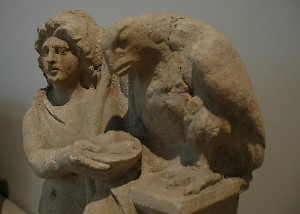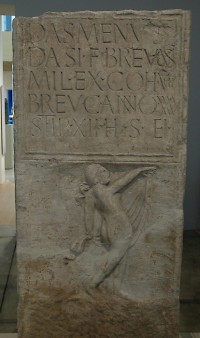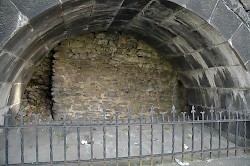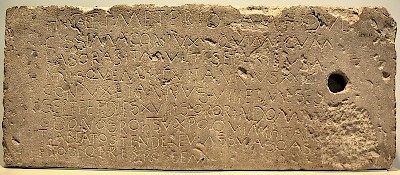Rigomagus (Remagen)
Q3431966Rigomagus: Roman fort, part of the Rhine limes, modern Remagen.

Although there are indications for earlier occupation, Rigomagus (Celtic "royal market", from rig, "king", and magus, "market") was probably founded at the beginning of the common era. Dendrochronological evidence shows that it was built or rebuilt between 6 BCE and 6 CE. This means that it was founded after general Tiberius, the future emperor, had pacified the valleys of the rivers Main and Lippe, and before he started the exploration of the valley of the Elbe.

It appears that Rigomagus was refounded as an auxiliary fort made of wood during the reign of Claudius (r.41-54). This military settlement offered accomodation to about 500 soldiers, who guarded the entrance of the valley of the river Ahr, a contributory of the Rhine. Among the first soldiers was the eighth cohort of Breucians, a tribe that lived along the Danube.
The fort was reconstructed from natural stone in the last quarter of the first century. Between 70 and 275, its main occupant was the First cohort Flavian Spanish cavalry (cohors I Flavia Hispana equitata). Rigomagus was destroyed in 275 and rebuilt after 280.

The castle was still functioning in 365, but may have been abandoned by the army soon after. The wall that is visible today (not far from the church), belongs to this late period.
Among the first Christians of Rigomagus is a lady named Meteriola, whose tombstone is one of the most important objects in the Rheinisches Landesmuseum in Bonn. It dates to the second half of the fifth century, and proves continuity of occupation for the civil settlement.

The town is not far from the Vinxtbach, the boundary beween Germania Inferior and Germania Superior, the two Roman provinces along the river Rhine.